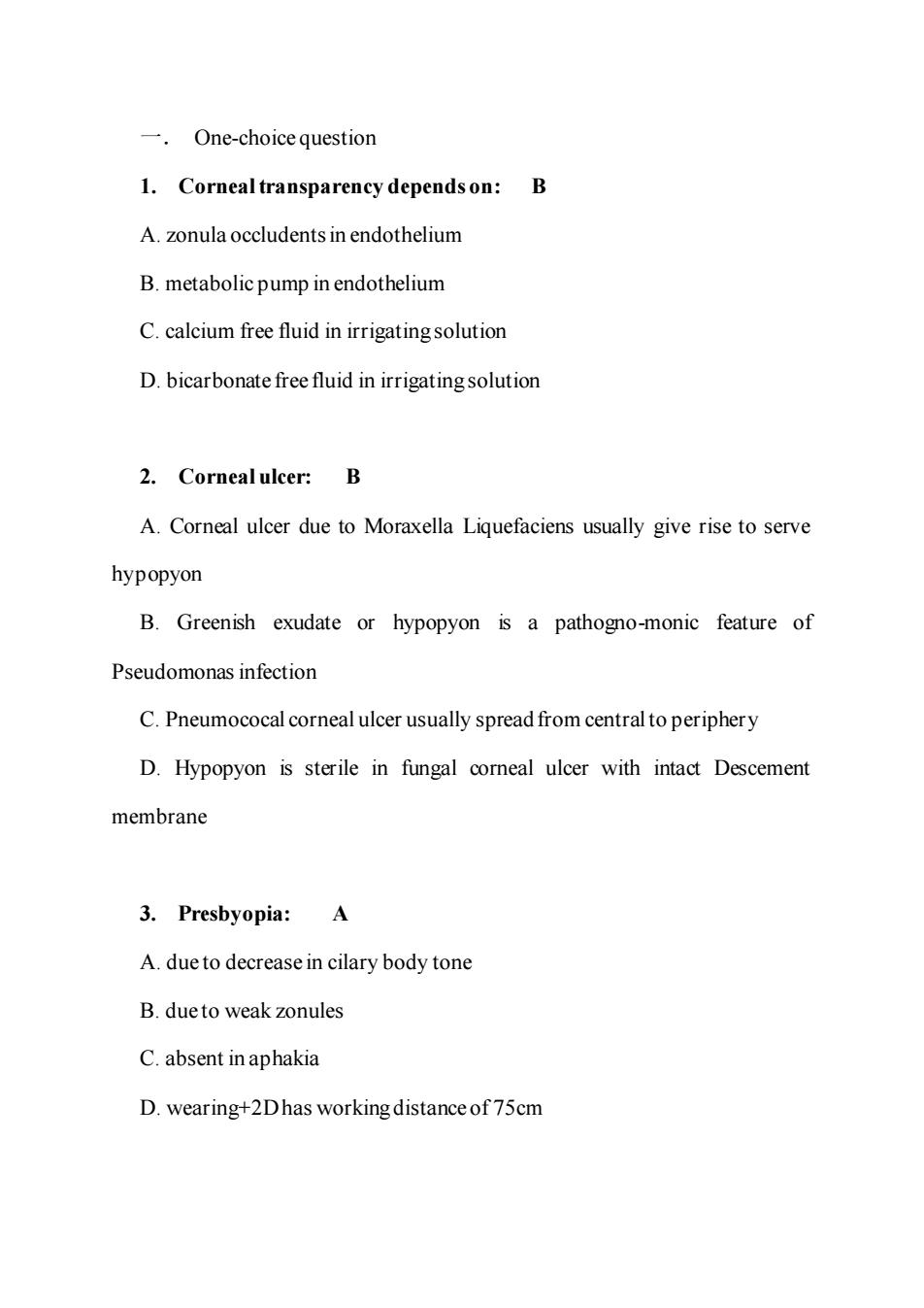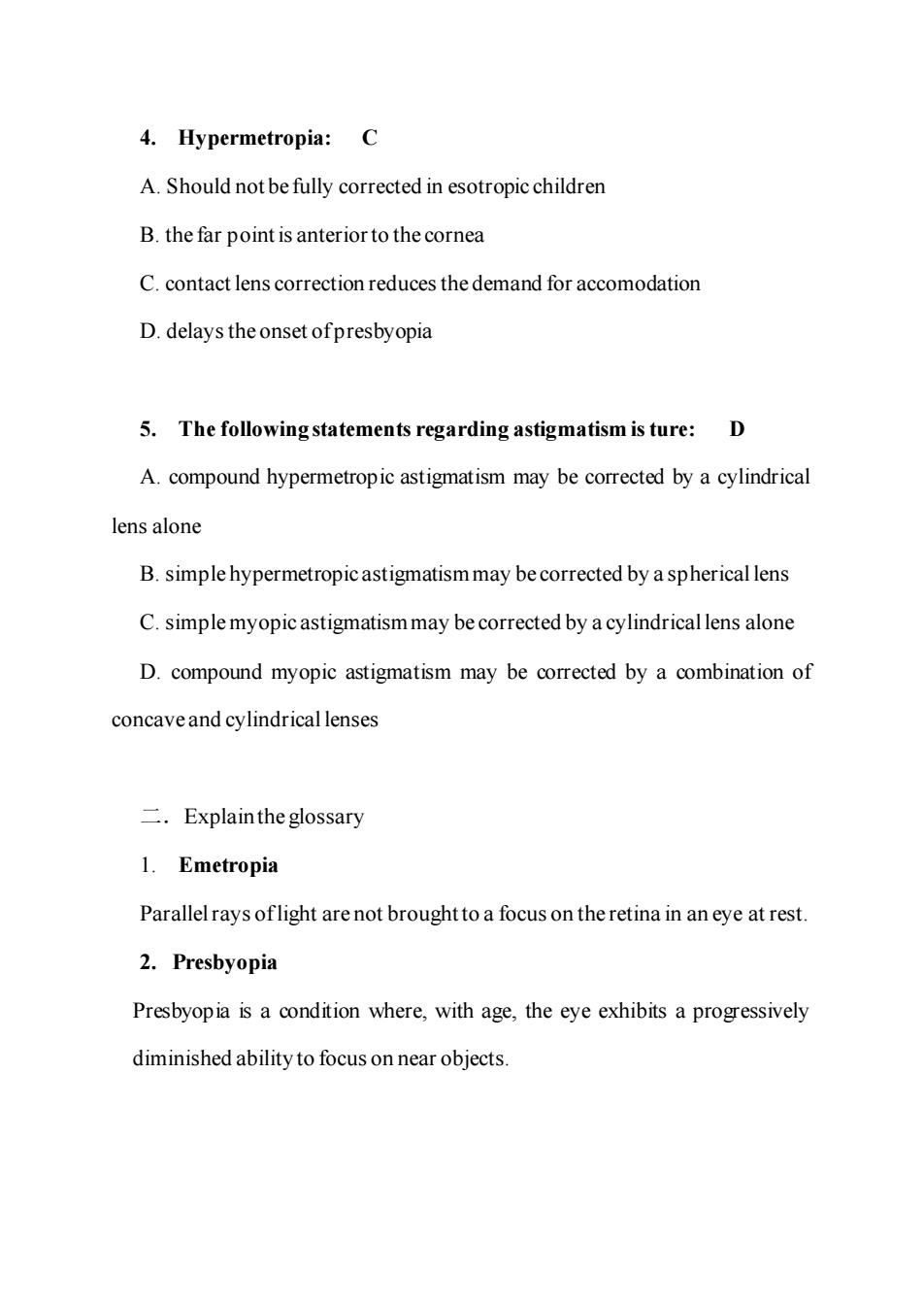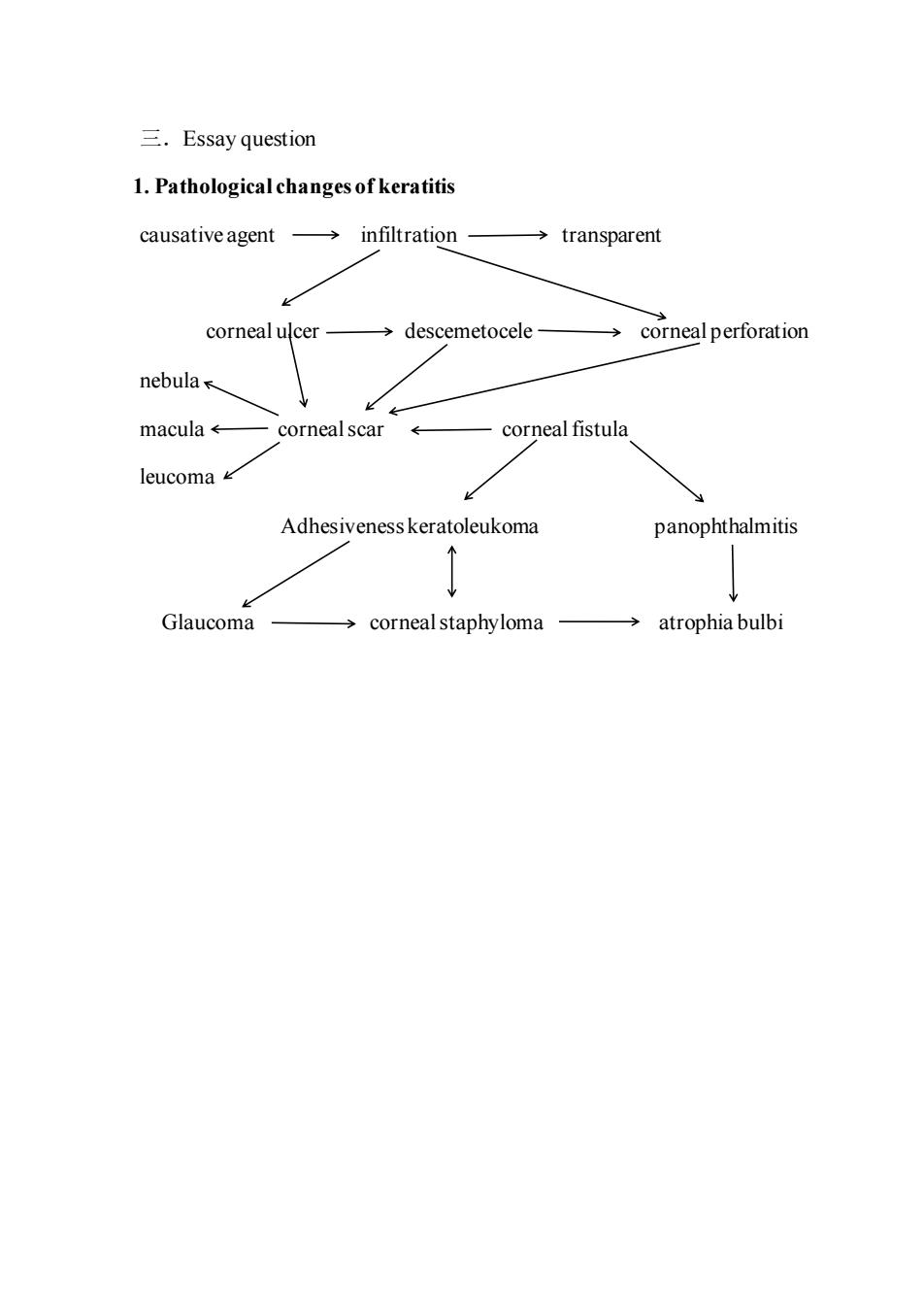
-One-choice question 1.Cornealtransparency dependson:B A.zonula occludents in endothelium B.metabolic pump in endothelium C.calcium free fluid in irrigatingsolution D.bicarbonate free fluid in irrigatingsolution 2.Cornealulcer:B A.Corneal ulcer due to Moraxella Liquefaciens usually give rise to serve hypopyon B.Greenish exudate or hypopyon is a pathogno-monic feature of Pseudomonas infection C.Pneumococal corneal ulcer usually spread from central to periphery D.Hypopyon is sterile in fungal corneal ulcer with intact Descement membrane 3.Presbyopia: A A.due to decrease in cilary body tone B.dueto weak zonules C.absent inaphakia D.wearing+2Dhas workingdistance of 75cm
一. One-choice question 1. Corneal transparency depends on: B A. zonula occludents in endothelium B. metabolic pump in endothelium C. calcium free fluid in irrigating solution D. bicarbonate free fluid in irrigating solution 2. Corneal ulcer: B A. Corneal ulcer due to Moraxella Liquefaciens usually give rise to serve hypopyon B. Greenish exudate or hypopyon is a pathogno-monic feature of Pseudomonas infection C. Pneumococal corneal ulcer usually spread from central to periphery D. Hypopyon is sterile in fungal corneal ulcer with intact Descement membrane 3. Presbyopia: A A. due to decrease in cilary body tone B. due to weak zonules C. absent in aphakia D. wearing+2D has working distance of 75cm

4.Hypermetropia:C A.Should not be fully corrected in esotropic children B.the far point is anteriorto the cornea C.contact lens correction reduces the demand for accomodation D.delays the onset ofpresbyopia 5.The followingstatements regarding astigmatism is ture:D A.compound hypermetropic astigmatism may be corrected by a cylindrical lens alone B.simple hypermetropicastigmatismmay be corrected by aspherical lens C.simple myopicastigmatismmay be corrected by a cylindricallens alone D.compound myopic astigmatism may be corrected by a combination of concave and cylindrical lenses Explainthe glossary 1.Emetropia Parallel rays oflight are not brought to a focus on the retina in an eye at rest 2.Presbyopia Presbyopia is a condition where,with age,the eye exhibits a progressively diminished ability to focus on near objects
4. Hypermetropia: C A. Should not be fully corrected in esotropic children B. the far point is anterior to the cornea C. contact lens correction reduces the demand for accomodation D. delays the onset of presbyopia 5. The following statements regarding astigmatism is ture: D A. compound hypermetropic astigmatism may be corrected by a cylindrical lens alone B. simple hypermetropic astigmatism may be corrected by a spherical lens C. simple myopic astigmatism may be corrected by a cylindrical lens alone D. compound myopic astigmatism may be corrected by a combination of concave and cylindrical lenses 二.Explain the glossary 1. Emetropia Parallel rays of light are not brought to a focus on the retina in an eye at rest. 2. Presbyopia Presbyopia is a condition where, with age, the eye exhibits a progressively diminished ability to focus on near objects

三.Essay question 1.Pathological changes of keratitis causative agent infiltration→ transparent corneal ulcer->descemetocele corneal perforation nebula macula← corneal scar← corneal fistula leucoma Adhesiveness keratoleukoma panophthalmitis Glaucoma corneal staphyloma atrophia bulbi
三.Essay question 1. Pathological changes of keratitis causative agent infiltration transparent corneal ulcer descemetocele corneal perforation nebula macula corneal scar corneal fistula leucoma Adhesiveness keratoleukoma panophthalmitis Glaucoma corneal staphyloma atrophia bulbi